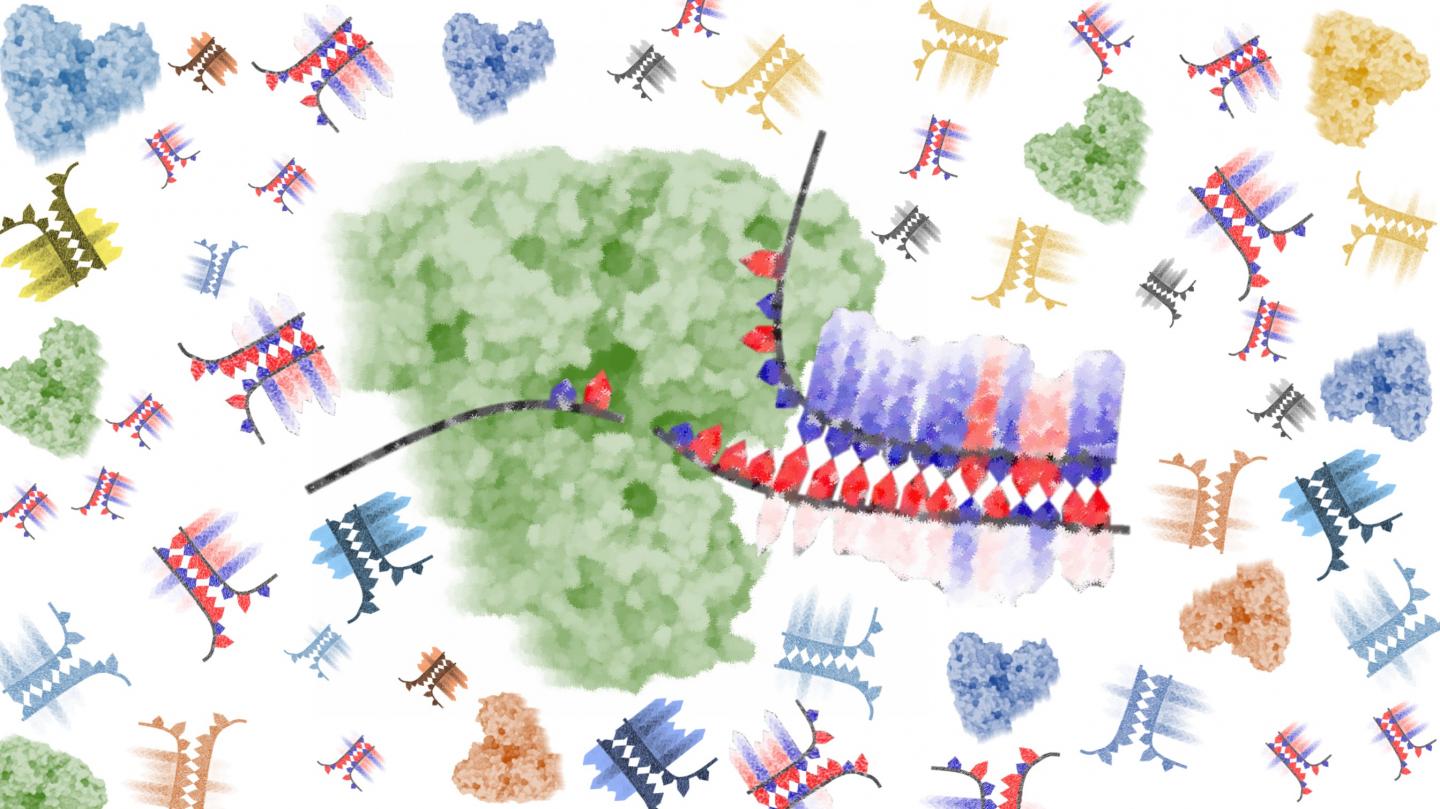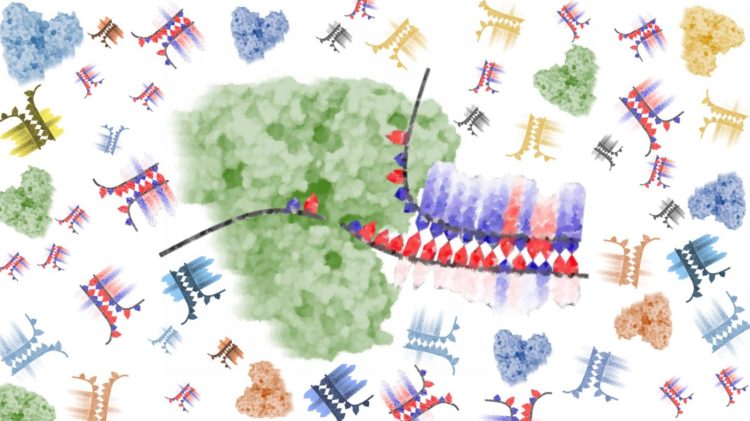An international research group sheds light on one of the key mechanisms of cell life by joining computer simulations and lab experiments

Credit: Francesco Colizzi
From home to office and back. The road is the same, and yet the outbound journey is longer than the inbound journey. Why is that? The reason is the obstacles the car driver usually finds on his way to work, which are absent on the way back. Now, replace the road with DNA strands and you will have grasped the crux of the discovery just published by an international research group on the journal PNAS. The double helix of DNA is subject to the action of specific proteins, called helicases, which have the task of separating the two strands so that the information contained in the genome is made available for a variety of activities that are essential to cell life. In short, DNA is like a book, it needs to be opened to be read! Helicases have the task of opening this “book”. Through this work, the researchers have shown that helicases succeed in carrying out their task more easily, and therefore quickly, working on one of the two strands with respect to the other. They explained that the reason lies in the sequence composition of the DNA section. As we know, DNA has four nitrogenous bases, which constitute the alphabet that is used to write our genome. When there are “hindered” bases like adenine and guanine on the strand opposite to that on which the helicase moves, they bump against the helicase and make the process slower. If, on the contrary, there are “small” bases, like cytosine and thymine, the opening process is faster. The scientists infer that this could mean that the genome has yet-another way, which has not been considered until now, of regulating the flow of information: indeed, the genetic information connected with the direction in which the helicase proceeds more slowly will be read less frequently – with possible consequences on the gene expression. The research was initially conducted with computer simulations. The predictions obtained in this manner were then confirmed by experiments. The study emerged from an idea of two SISSA scientists, Professor Giovanni Bussi and Francesco Colizzi, who has since moved to the Institute for Research in Biomedicine (IRB Barcelona), Spain, and has involved the laboratories led by Carlos Penedo and Malcolm White at the University of Saint Andrews, Great Britain, with their collaborators.
First theory and then experiment
“We know that the difficulty in unwinding a double strand of DNA or RNA depends on the strength which binds the two, but that the same double helix was easier to unwind in one direction rather than the other has been a real surprise. We have come to propose this hypothesis through computer simulations and subsequently designed real lab experiments that could prove or disprove the hypothesis. Eventually, the lab experiments proved that the hypothesis was correct”. Thanks to fluorescent tracers, the researchers observed that in the experiment the double helix is processed more easily in one direction rather than the other”. In short, there is one strand and one preferential direction for unwinding DNA according to the message written in it. Scientifically, this is very interesting”. Since the helicase opens the double helix moving on a strand separating it from the opposite one, “we have hypothesised and verified that the speed of this process depends on the composition of the bases of the latter”. If there are many bumpy bases, like guanine and adenine, then the helicase will have a more complex task and proceed more slowly. And vice versa. “What we can say is that the direction with which it is easier to separate a double helix depends on the sequence of bases in a specific region”.
The implications of the discovery
This discovery bears different points of interest. The first, as we said, is connected with the approach that brings together computer simulations and lab experiments in a combination that leads us straight to the frontiers of science. The second is of a more general nature: “The regulation of all the activities in which DNA is involved is one of the most interesting and crucial issues of biology, in which much more still needs to be discovered. With this study we put forward a hypothesis that has not been considered so far: namely, that the various types of regulation already known are joined by another which relates specifically to the preferential direction in which a double strand is read, based on the ease of being unwound. There is an additional, more speculative consideration, based on the observation that DNA unwinds in a different way to RNA. “For DNA, we find helicases able to work in both directions. Instead, for RNA, the helicases found in nature follow mostly one-way roads. The hypothesis of the scientists is that the double helix of RNA has some sort of geometrical asymmetry (different to DNA) that, throughout evolution, has dictated the one-way direction of RNA helicases. It can therefore be speculated that evolution has selected the helicases that processes RNA in the direction in which it is easy to travel. Unfortunately, a hypothesis of this kind cannot be refuted or verified: to do so, it would be necessary to retrace the natural evolution for millions of years, eliminating this preference and seeing what happens! It is definitely fascinating to think that the geometry of the double helix can have deeply influenced the development of molecular machines necessary for life.”
###
Media Contact
Donato Ramani
[email protected]
39-040-378-7513
Original Source
https:/
Related Journal Article
http://dx.





